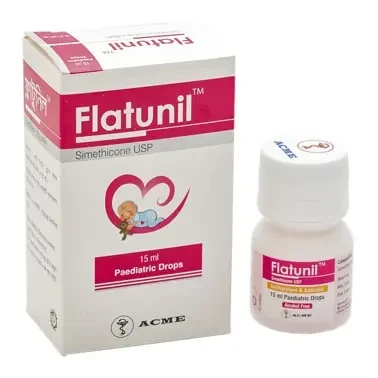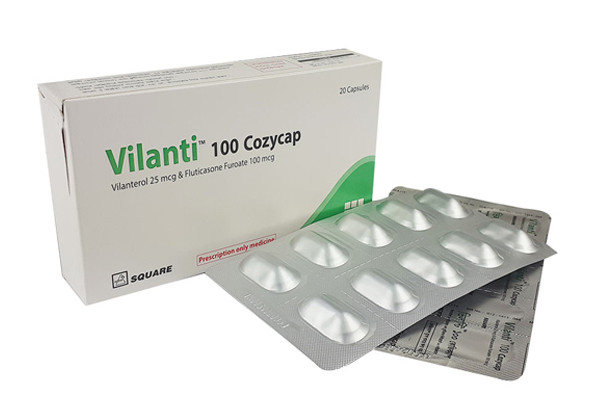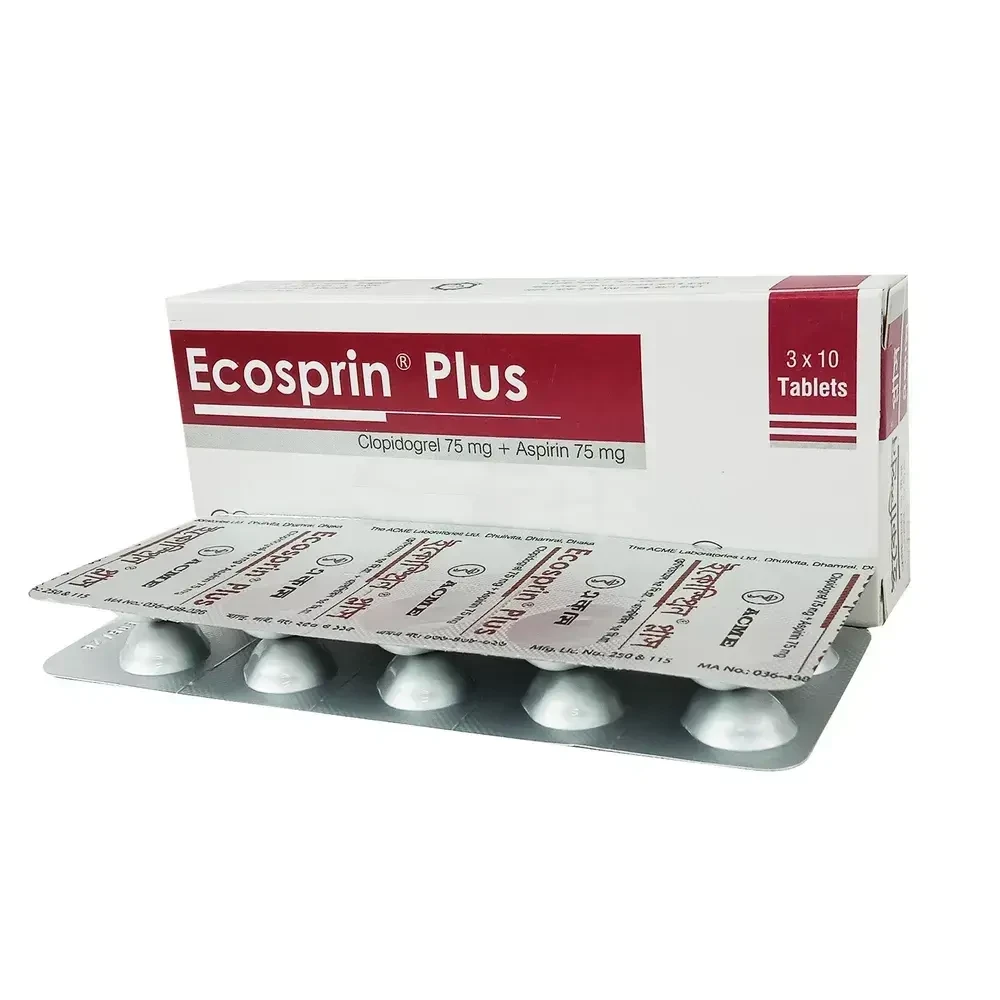

Vigorex Tablet, Sildenafil Citrate 50 mg
Inhouse product
-
৳11.40
৳12.00 -
৳42.75
৳45.00 -
৳16.63
৳17.50 -
৳2.14
৳2.25
Reviews & Ratings
Indications
Treatment of men with
erectile dysfunction, which is the inability to achieve or maintain a penile
erection sufficient for satisfactory sexual performance. In order for Vigorex
to be effective, sexual stimulation is required. Vigorex is also indicated in pulmonary
arterial hypertension.
* রেজিস্টার্ড চিকিৎসকের পরামর্শ মোতাবেক ঔষধ সেবন করুন'
Description
Vigorex is a
selective, reversible inhibitor of cyclic guanosine monophosphate
(cGMP)-specific phosphodiesterase type 5 (PDE5). When sexual stimulation causes
the local release of nitric oxide; inhibition of PDE5 by Vigorex produces
increased levels of cGMP in the corpus cavernosum. This results in smooth
muscle relaxation and inflow of blood into the penile tissues, thereby
producing an erection. Vigorex has no effect in the absence of sexual
stimulation.
Pharmacology
Mechanism of Action: The physiologic mechanism of erection of the
penis involves release of nitric oxide (NO) in the corpus cavernosum during
sexual stimulation. NO then activates the enzyme guanylate cyclase, which
results in increased levels of cyclic guanosine monophosphate (cGMP), producing
smooth muscle relaxation in the corpus cavernosum and allowing inflow of blood.
Sildenafil has no direct relaxant effect on isolated human corpus cavernosum,
but enhances the effect of nitric oxide (NO) by inhibiting phosphodiesterase
type 5 (PDE5), which is responsible for degradation of cGMP in the corpus
cavernosum. When sexual stimulation causes local release of NO, inhibition of
PDE5 by Sildenafil causes increased levels of cGMP in the corpus cavernosum,
resulting in smooth muscle relaxation and inflow of blood to the corpus
cavernosum. Sildenafil at recommended doses has no effect in the absence of
sexual stimulation.
Pharmacokinetics and
Metabolism: Sildenafil is
rapidly absorbed after oral administration, with a mean absolute
bioavailability of 41% (range 25-63%). It is eliminated predominantly by
hepatic metabolism (mainly cytochrome P450 3A4) and is converted to an active
metabolite with properties similar to the parent, Sildenafil. Both Sildenafil
and the metabolite have terminal half lives of about 4 hours.
Absorption and
Distribution: Sildenafil is
rapidly absorbed. Maximum observed plasma concentrations are reached within 30
to 120 minutes (median 60 minutes) of oral dosing in the fasted state. When
Sildenafil is taken with a high fat meal, the rate of absorption is reduced.
Metabolism and
Excretion: Sildenafil is
cleared by hepatic microsomal isoenzymes. After either oral or intravenous
administration, Sildenafil is excreted as metabolites predominantly in the
feces (approximately 80% of administered oral dose) and to a lesser extent in the
urine (approximately 13% of the administered oral dose).
Pharmacokinetics in
Special Populations: Geriatrics: Healthy
elderly volunteers (65 years or over) had a reduced clearance of Sildenafil,
resulting in approximately 84% and 107% higher plasma AUC values of Sildenafil
compared to those seen in healthy younger volunteers.
Dosage &
Administration
Erectile dysfunction: For most patients, the recommended dose is
50 mg taken, as needed, approximately 1 hour before sexual activity. However,
Sildenafil may be taken anywhere from 4 hours to 0.5 hour before sexual
activity. Based on effectiveness and toleration, the dose may be increased to a
maximum recommended dose of 100 mg or decreased to 25 mg. The maximum
recommended dosing frequency is once per day.
The following factors
are associated with increased plasma levels of Sildenafil: age >65, hepatic impairment, severe renal
impairment, and concomitant use of potent cytochrome P450 3A4 inhibitors
(ketoconazole, itraconazole, erythromycin, saquinavir). Since higher plasma
levels may increase both the efficacy and incidence of adverse events, a
starting dose of 25 mg should be considered in these patients. Sildenafil was
shown to potentiate the hypotensive effects of nitrates and its administration
in patients who use nitric oxide donors or nitrates in any form is therefore
contraindicated. When Sildenafil is co-administered with an alpha-blocker,
patients should be stable on alphablocker therapy prior to initiating
Sildenafil treatment and Sildenafil should be initiated at the lowest dose.
Pulmonary arterial
hypertension: The recommended dose
of sildenafil citrate is 20 mg three times a day and should be taken
approximately 4-6 hours apart, with or without food.
* রেজিস্টার্ড চিকিৎসকের পরামর্শ মোতাবেক ঔষধ সেবন করুন'
Interaction
Vigorex metabolism is
principally mediated by the cytochrome P450 (CYP) isoforms 3A4 (major route)
and 2C9 (minor route). Therefore, inhibitors of these isoenzymes 15 may reduce
Vigorex clearance and inducers of these isoenzymes may increase Vigorex
clearance. Cimetidine (800 mg), a nonspecific CYP inhibitor, caused a 56%
increase in plasma Vigorex concentrations when coadministered with Vigorex (50
mg) to healthy volunteers. When a single 100 mg dose of Vigorex was
administered with erythromycin, a specific CYP3A4 inhibitor, at steady state
(500 mg bid for 5 days), there was a 182% increase in Vigorex systemic exposure
(AUC). In addition, in a study performed in healthy male volunteers,
co-administration of the HIV protease inhibitor saquinavir, also a CYP3A4
inhibitor, at steady state (1200 mg tid) with Vigorex (100 mg single dose)
resulted in a 140% increase in Vigorex Cmax and a 210% increase in Vigorex AUC.
Vigorex had no effect on saquinavir pharmacokinetics. Stronger CYP3A4
inhibitors such as ketoconazole or itraconazole would be expected to have still
greater effects, and population data from patients in clinical trials did indicate
a reduction in Vigorex clearance when it was coadministered with CYP3A4
inhibitors (such as ketoconazole, erythromycin, or cimetidine). In another
study in healthy male volunteers, coadministration with the HIV protease
inhibitor ritonavir, which is a highly potent P450 inhibitor, at steady state
(500 mg bid) with Vigorex (100 mg single dose) resulted in a 300% (4-fold)
increase in Vigorex Cmax and a 1000% (11-fold) increase in Vigorex plasma AUC.
At 24 hours the plasma levels of Vigorex were still approximately 200 ng/mL,
compared to approximately 5 ng/mL when Vigorex was dosed alone. This is
consistent with ritonavir's marked effects on a broad range of P450 substrates.
Vigorex had no effect on ritonavir pharmacokinetics. Although the interaction between
other protease inhibitors and Vigorex has not been studied, their concomitant
use is expected to increase Vigorex levels. In a study of healthy male
volunteers, co-administration of Vigorex at steady state (80 mg t.i.d.) with
endothelin receptor antagonist bosentan (a moderate inducer of CYP3A4, CYP2C9
and possibly of cytochrome P450 2C19) at steady state (125 mg b.i.d.) resulted
in a 63% decrease of Vigorex AUC and a 55% decrease in Vigorex Cmax.
Concomitant administration of strong CYP3A4 inducers, such as rifampin, is
expected to cause greater decreases in plasma levels of Vigorex. Single doses
of antacid (magnesium hydroxide/aluminum hydroxide) did not affect the
bioavailability of Vigorex. Pharmacokinetic data from patients in clinical
trials showed no effect on Vigorex pharmacokinetics of CYP2C9 inhibitors (such
as tolbutamide, warfarin), CYP2D6 inhibitors (such as selective serotonin
reuptake inhibitors, tricyclic antidepressants), thiazide and related
diuretics, ACE inhibitors, and calcium channel blockers. The AUC of the active
metabolite, N-desmethyl Vigorex, was increased 62% by loop and
potassium-sparing diuretics and 102% by 16 nonspecific beta-blockers. These
effects on the metabolite are not expected to be of clinical consequence.
Contraindications
Sildenafil is
contraindicated in patient with hypersensitivity to any component of this
medication. Sildenafil potentiates the hypotensive effects of nitrates, so it
is contraindicated in patients who are using organic nitrates, either regularly
or intermittently.
Side Effects
Body as a whole: face edema, photosensitivity reaction,
shock, asthenia, pain, chills, accidental fall, abdominal pain, allergic
reaction, chest pain, accidental injury.
Cardiovascular: angina pectoris, AV block, migraine,
syncope, tachycardia, palpitation,hypotension, postural hypotension, myocardial
ischemia, cerebral thrombosis, cardiac arrest, heart failure, abnormal
electrocardiogram, cardiomyopathy.
Digestive: vomiting, glossitis, colitis, dysphagia,
gastritis, gastroenteritis, esophagitis, stomatitis, dry mouth, liver function
tests abnormal, rectal hemorrhage, gingivitis.
Hemic and Lymphatic: anemia and leukopenia.
Metabolic and
Nutritional: thirst, edema, gout,
unstable diabetes, hyperglycemia, peripheral edema, hyperuricemia, hypoglycemic
reaction, hypernatremia.
Musculoskeletal: arthritis, arthrosis, myalgia, tendon
rupture, tenosynovitis, bone pain,myasthenia, synovitis.
Nervous: ataxia, hypertonia, neuralgia, neuropathy,
paresthesia, tremor, vertigo, depression, insomnia, somnolence, abnormal
dreams, reflexes decreased, hyperesthesia.
Respiratory: asthma, dyspnea, laryngitis, pharyngitis,
sinusitis, bronchitis, sputum increased, cough increased.
Skin and Appendages: urticaria, herpes simplex, pruritus,
sweating, skin ulcer, contact dermatitis, exfoliative dermatitis.
Special Senses: sudden decrease or loss of hearing,
mydriasis, conjunctivitis, photophobia, tinnitus, eye pain, ear pain, eye
hemorrhage, cataract, dry eyes.
Urogenital: cystitis, nocturia, urinary frequency,
breast enlargement, urinary incontinence, abnormal ejaculation, genital edema
and anorgasmia.
Cardiovascular and
cerebrovascular: Serious
cardiovascular, cerebrovascular, and vascular events, including myocardial
infarction, sudden cardiac death, ventricular arrhythmia, cerebrovascular
hemorrhage, transient ischemic attack, hypertension, subarachnoid and
intracerebral hemorrhages, and pulmonary hemorrhage have been reported
post-marketing in temporal association with the use of Vigorex. Most, but not
all, of these patients had preexisting cardiovascular risk factors. Many of
these events were reported to occur during or shortly after sexual activity,
and a few were reported to occur shortly after the use of Vigorex without
sexual activity. Others were reported to have occurred hours to days after the
use of Vigorex and sexual activity. It is not possible to determine whether
these events are related directly to Vigorex, to sexual activity, to the patient's
underlying 23 cardiovascular disease, to a combination of these factors, or to
other factors.
Nervous: seizure, seizure recurrence, anxiety, and
transient global amnesia.
Urogenital: prolonged erection, priapism and hematuria.
Special Senses: diplopia, temporary vision loss/decreased
vision, ocular redness or bloodshot appearance, ocular burning, ocular
swelling/pressure, increased intraocular pressure, retinal vascular disease or
bleeding, vitreous detachment/traction, paramacular edema and epistaxis.
Pregnancy &
Lactation
Pregnancy category B.
There are no adequate and well-controlled studies of Sildenafil in pregnant
women. Sildenafil is not indicated for use by women. In animal study shows that
Sildenafil has no evidence of teratogenicity or embryotoxicity.
Precautions & Warnings
General: The
evaluation of erectile dysfunction should include a determination of potential
underlying causes and the identification of appropriate treatment following a
complete medical assessment.
Before prescribing Vigorex, it is important to note the following: Caution is
advised when Phosphodiesterase Type 5 (PDE5) inhibitors are co-administered
with alpha-blockers. PDE5 inhibitors, including Vigorex, and alpha-adrenergic
blocking agents are both vasodilators with blood-pressure-lowering effects.
When vasodilators are used in combination, an additive effect on blood pressure
may be anticipated. In some patients, concomitant use of these two drug classes
can lower blood pressure significantly leading to symptomatic hypotension (e.g.
dizziness, lightheadedness, fainting).
Consideration should be given to the following:
- Patients should be stable on
alpha-blocker therapy prior to initiating a PDE5 inhibitor. Patients who
demonstrate hemodynamic instability on alpha-blocker therapy alone are at
increased risk of symptomatic hypotension with concomitant use of PDE5
inhibitors.
- In those patients who are
stable on alpha-blocker therapy, PDE5 inhibitors should be initiated at
the lowest dose.
- In those patients already
taking an optimized dose of a PDE5 inhibitor, alpha-blocker therapy should
be initiated at the lowest dose. A stepwise increase in alpha-blocker dose
may be associated with further lowering of blood pressure when taking a
PDE5 inhibitor.
- Safety of combined use of PDE5
inhibitors and alpha-blockers may be affected by other variables,
including intravascular volume depletion and other anti-hypertensive
drugs.
- Vigorex has systemic
vasodilatory properties and may augment the blood pressure-lowering effect
of other anti-hypertensive medications.
- Patients on multiple
antihypertensive medications were included in the pivotal clinical trials
for Vigorex. In a separate drug interaction study, when amlodipine, 5 mg
or 10 mg, and Vigorex, 100 mg were orally administered concomitantly to
hypertensive patients mean additional blood pressure reduction of 8 mmHg
systolic and 7 mmHg diastolic were noted.
- The safety of Vigorex is
unknown in patients with bleeding disorders and patients with active
peptic ulceration.
- Vigorex should be used with
caution in patients with anatomical deformation of the penis (such as
angulation, cavernosal fibrosis or Peyronie's disease), or in patients who
have conditions which may predispose them to priapism (such as sickle cell
anemia, multiple myeloma, or leukemia).
- The safety and efficacy of
combinations of Vigorex with other treatments for erectile dysfunction
have not been studied. Therefore, the use of such combinations is not
recommended.
There is a potential
for cardiac risk of sexual activity in patients with preexisting cardiovascular
disease. Therefore, treatments for erectile dysfunction, including Vigorex,
should not be generally used in men for whom sexual activity is inadvisable
because of their underlying cardiovascular status. Vigorex has systemic
vasodilatory properties that resulted in transient decreases in supine blood
pressure in healthy volunteers (mean maximum decrease of 8.4/5.5 mmHg). While
this normally would be expected to be of little consequence in most patients,
prior to prescribing Vigorex, physicians should carefully consider whether
their patients with underlying cardiovascular disease could be affected
adversely by such vasodilatory effects, especially in combination with sexual
activity.
Patients with the following underlying conditions can be particularly sensitive
to the actions of vasodilators including Vigorex - those with left ventricular
outflow obstruction (e.g. aortic stenosis, idiopathic hypertrophic subaortic
stenosis) and those with severely impaired autonomic control of blood pressure.
There is no controlled clinical data on the safety or efficacy of Vigorex in
the following groups; if prescribed, this should be done with caution.
- Patients who have suffered a
myocardial infarction, stroke, or life-threatening arrhythmia within the
last 6 months;
- Patients with resting
hypotension (BP <90/50) or hypertension (BP >170/110);
- Patients with cardiac failure
or coronary artery disease causing unstable angina;
- Patients with retinitis
pigmentosa (a minority of these patients have genetic disorders of retinal
phosphodiesterases);
- Patients with sickle cell or
related anemias.
Prolonged erection
greater than 4 hours and priapism (painful erections greater than 6 hours in
duration) have been reported infrequently since market approval of Vigorex. In
the event of an erection that persists longer than 4 hours, the patient should
seek immediate medical assistance. If priapism is not treated immediately,
penile tissue damage and permanent loss of potency could result. If Vigorex is
prescribed to patients taking ritonavir, caution should be used. Data from
subjects exposed to high systemic levels of Vigorex are limited. Visual
disturbances occurred more commonly at higher levels of Vigorex exposure.
Decreased blood pressure, syncope, and prolonged erection were reported in some
healthy volunteers exposed to high doses of Vigorex (200-800 mg). To decrease
the chance of adverse events in patients taking ritonavir, a decrease in
Vigorex dosage is recommended.
Overdose Effects
In studies with
healthy volunteers of single doses up to 800 mg, adverse events were similar to
those seen at lower doses but incidence rates and severities were increased. 24
In cases of overdose, standard supportive measures should be adopted as
required. Renal dialysis is not expected to accelerate clearance as Vigorex is
highly bound to plasma proteins and it is not eliminated in the urine.
Therapeutic Class
Drugs for Erectile
Dysfunction
Storage Conditions
Keep in a dry place, away from light and heat.
Keep out of the reach of children.
Frequently Bought Products
Osmigen Tablet (30 pcs), Osimertinib 80 mg
Imacef IM Injection 500 mg vial, Ceftriaxone Sodium 500 mg/vial
Antixa Tablet, Apixaban 5 mg
Flatunil Pediatric Drops (15 ml), Simethicone 67 mg/ml
Product Queries (0)
Login Or Registerto submit your questions to seller
Other Questions
No none asked to seller yet
-
৳11.40
৳12.00 -
৳42.75
৳45.00 -
৳16.63
৳17.50 -
৳2.14
৳2.25

















